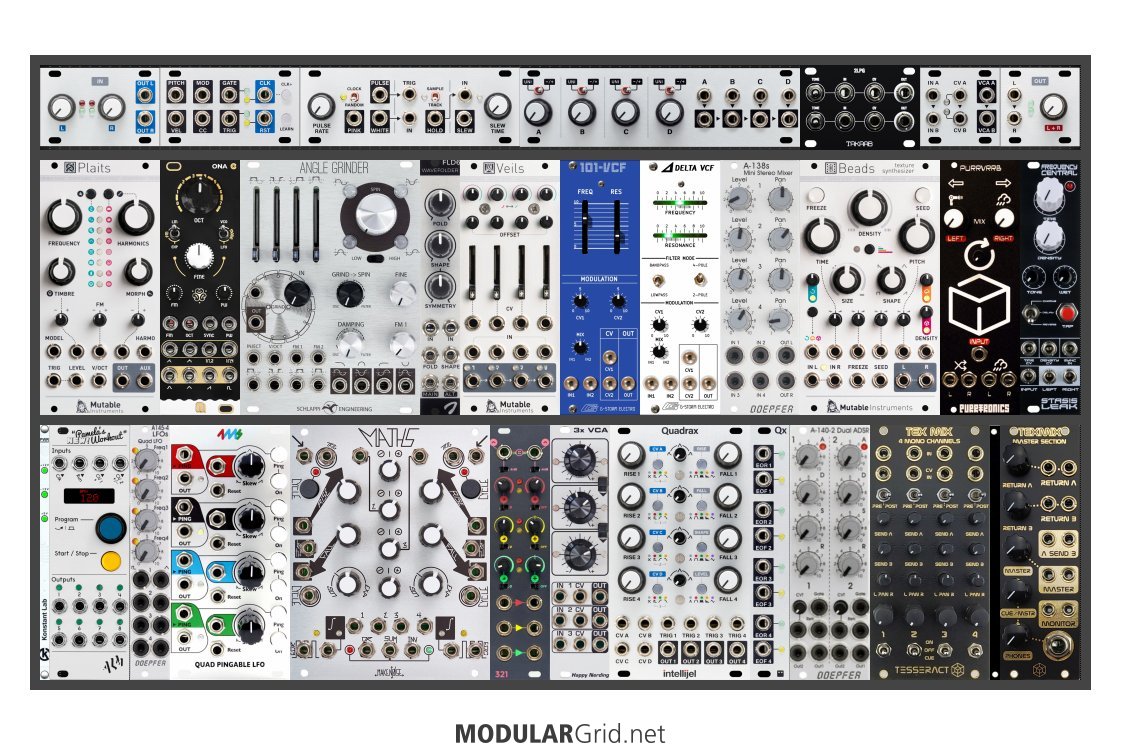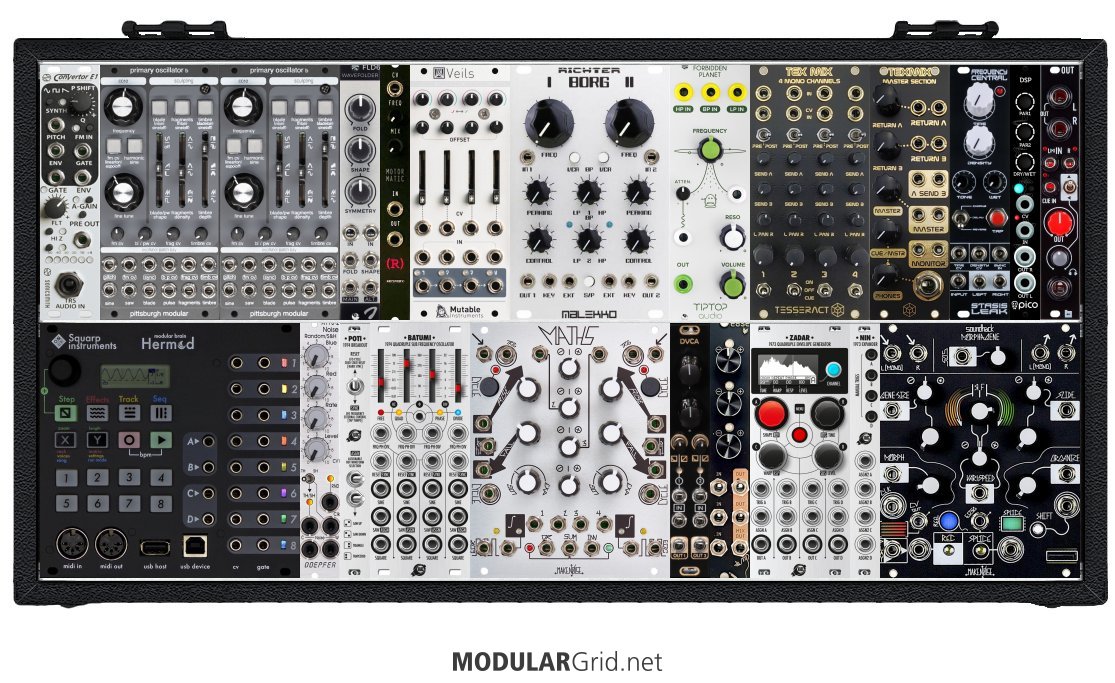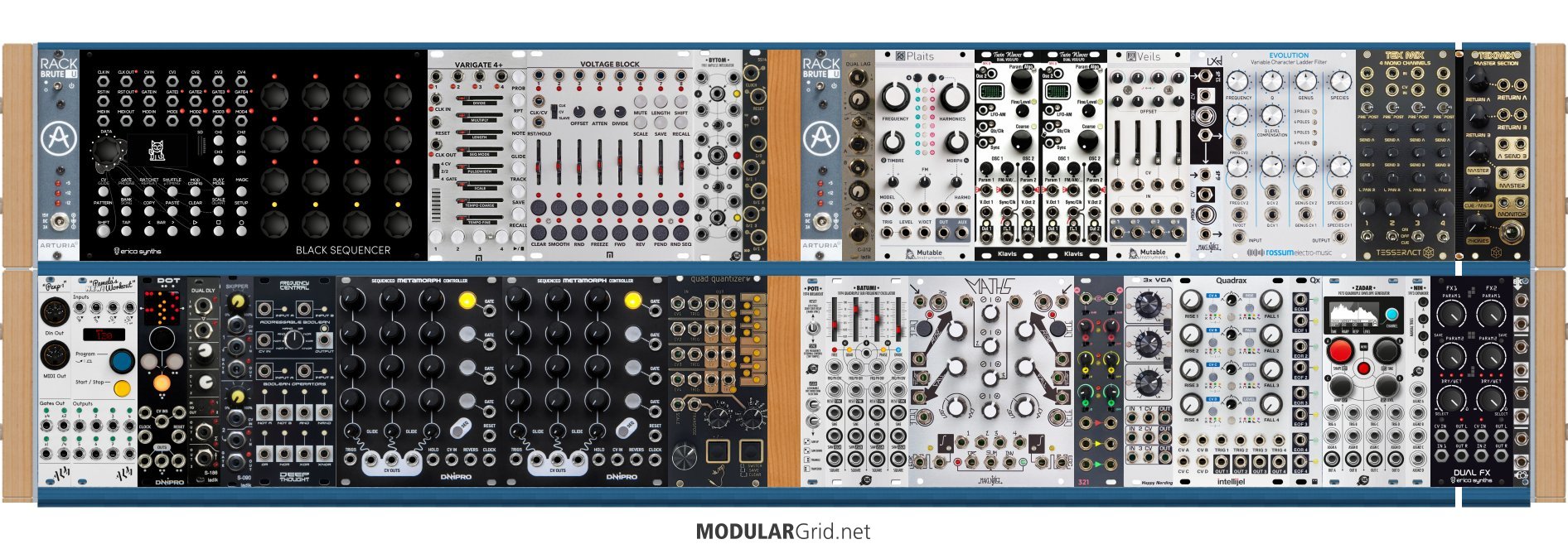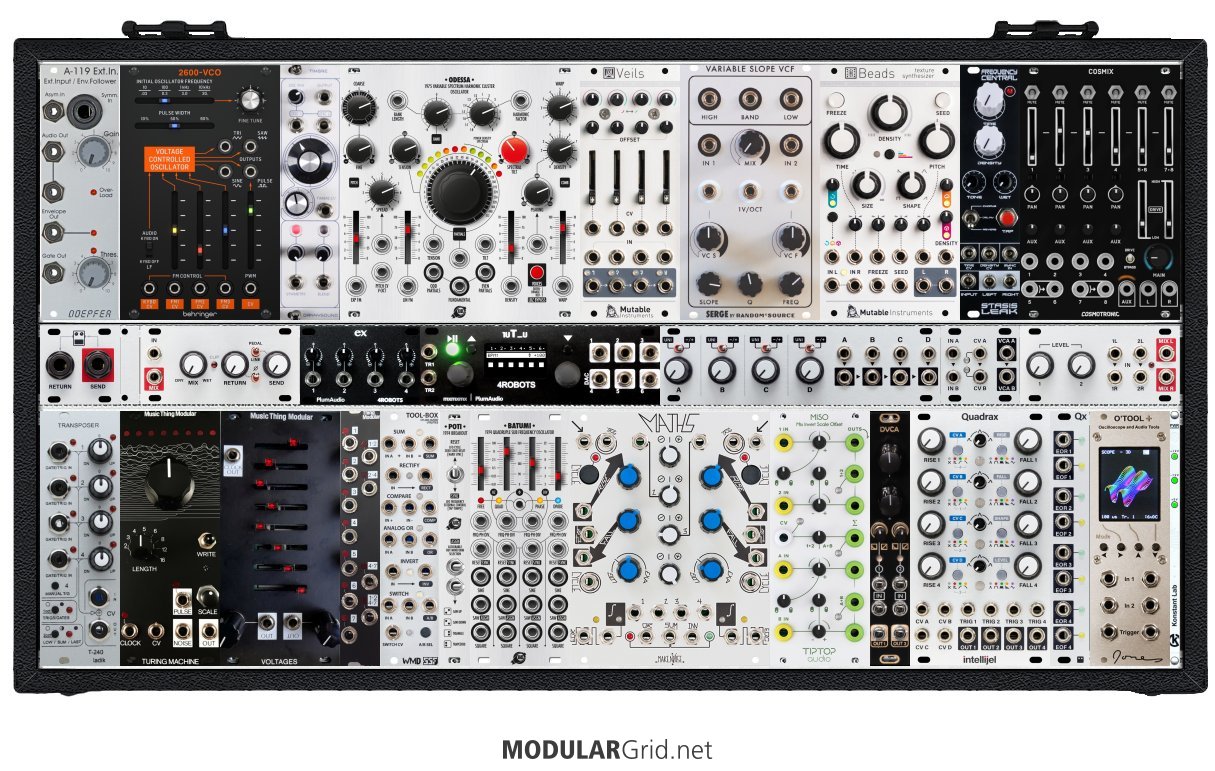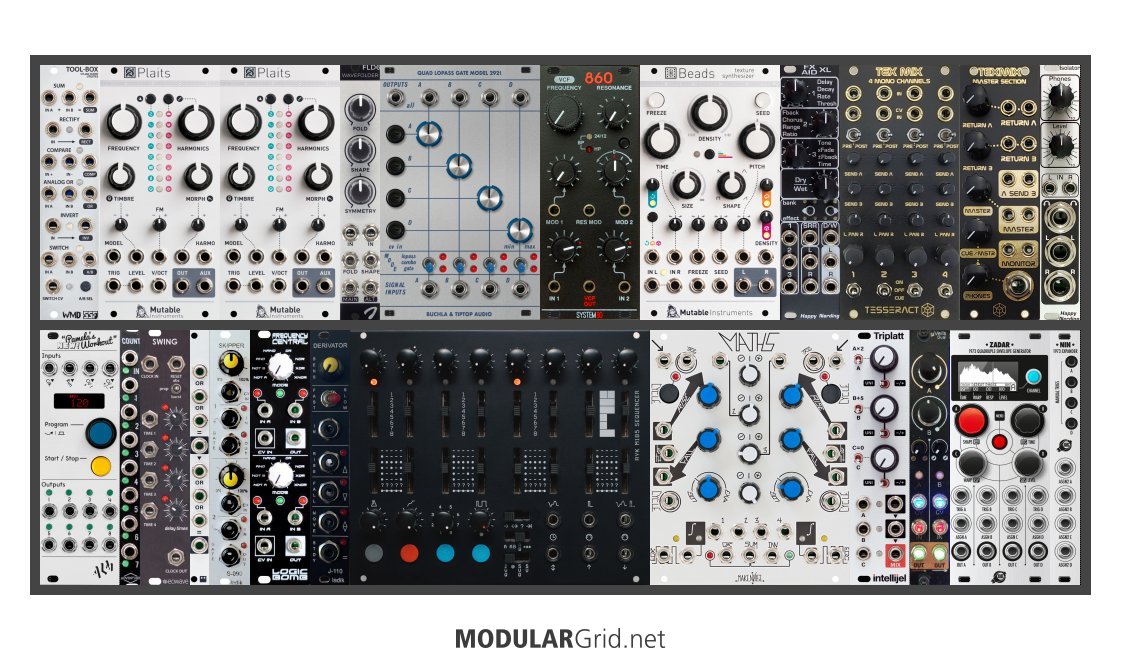(delayed a bit due to some odd MG behavior)
+1 on tossing the Distings in favor of a Disting EX. Plus, when you yank the regular Distings, you're 3/4ths of the way to fitting it in the build. And Jim's spot-on as usual on the 2 and 3 hp-width modules; put several of those next to each other, and you're looking at lots of annoyance, particularly if you're expecting to use this rig in a live setting.
There's better ways to do this...wait a bit...
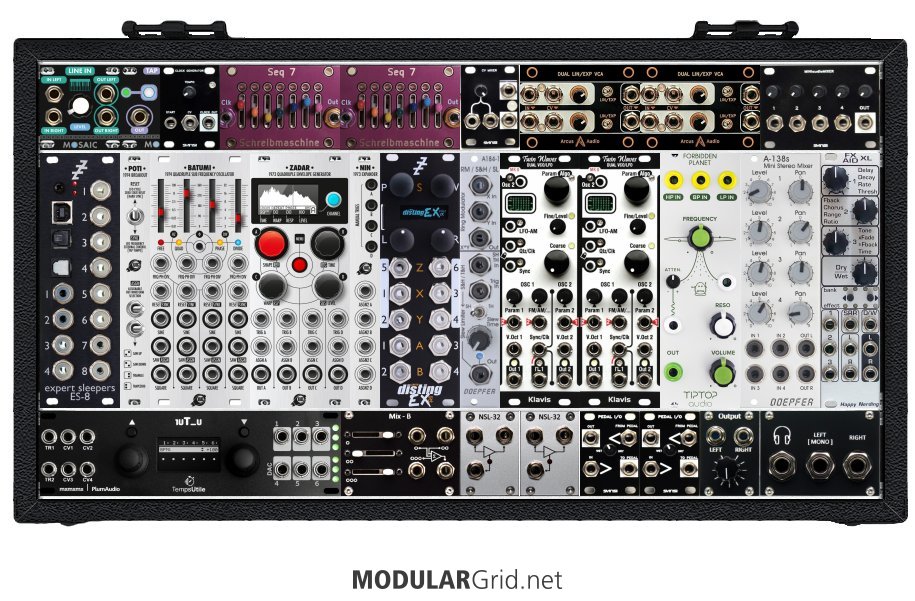
OK...now this is a lot better on ergonomics. I used the tile rows for a lot of things here, so what I'm planning to do here is to go over the single 3U row and then show how the tiles interface with that.
First off, there's the ES-8, on the left end for easy connection. Above that is a stereo input...oh, and some of these tiles might seem to be Intellijel-only, but I did check in all cases and Pulplogic panels ARE available where needed. Anyway, below the ES-8, etc...in other words, where the Pam's used to be...is a Temps Utile, very much like Pam's except it's got a few extra sequencing tricks up its sleeve. That's the master clock for the build, as well as a sequencer or two.
Next in the 3U are Xaoc's workhorse modulators, the Batumi and the Zadar, both of which have their expander modules here. However, what's going on above these is the "other LFO"...of a sort. By the stereo input, you'll see a tap tempo button, then a Syinsi clock module (yep, you can tap set it) feeds a pair of small 7-step sequencers which, in this case, are NOT sequencers but instead are functioning as "graphic LFOs" (or oscillators...depends on your clock rate) for odd modulation functions. And at the right end of the Schreibmaschine sequencers is a Syinsi crossfader which also features an inverted output...this is where the LFO, etc signals emerge, which allows you to crossfade all of this into some very complicated modulation signals...all out of a few tiles!
The Disting EX is next. But now, there's something going on under this, as you'll see a DC-coupled 3-in mixer feeding a pair of linear VCAs. This is a crossmod mixer for the Xaoc modulation modules, actually.
Then after that, there's a Doepfer utility module that combines a ring modulator (hence why this is right by the VCOs), sample and hold, and a slew limiter. Finally, we get to the FOUR VCOs in here...yep, four, and they're internally quantized. The Klavis Dual Waves mkii gets put in to get four oscillator signals in just 16 hp. Wavetable oscillators, at that. So, looking up from the VCOs, you'll notice a pair of Arcus dual VCAs that can be switched between linear and exponential response, and then a Syinsi 4-in mixer for summing the VCAs, if desired.
Back to the 3U row...after the VCOs, there's a Tiptop Forbidden Planet...which is a clone-ish of the nasty, gritty, LOADED with character Steiner-Parker Synthacon VCF. What's really fun about this is that you select the VCF response based on what input you've patched into. Then, sort of below that, you'll find a pair of I/O tiles for connecting external stompboxes (two...or one stereo one) and getting their outputs back into the synth; with some ultra-crazed stereo pedal, you can add way more sonic capability depending on which stompbox(es) you use, such as some of the Chase Bliss stuff, the Hologram, et al.
Now we're down toward the "output" end...you can see that tile pair at the bottom. The final mixer here is a Doepfer A-138s, which is a little 4-in/2-out mixer with panpots on each channel. Then at the end, the mixer can be used with a Happy Nerding FX Aid XL that's there for "global" effects such as reverb, chorus, and so on.
So...where did the drum modules go? Basically...away. If I left those in, this build would be VERY impossible...and would really only result in expense and cramped panel space. The advice I'll give there is this: get a drum machine. It's far better to sync one of those to the modular's clock, since a drum machine is set up specifically for rhythm production. You're not forcing your modular to be SO inclusive that you shortchange the instrument by blundering off into that trap. Hell, $300-ish can get you some hellacious percussion-in-a-box. And as such, it'll wail right along with the modular since it'll lock to the T_ u, no problem. Or use it as the master and drive the T_ u with it. Don't look at that as a compromise move, either...it really IS the proper solution, unless you like dropping a grand or so on something that should only cost $350. And if you want to tamper with it sonically...well, that's why that stereo input tile's there. Price didn't come out too hideous, either...didn't even crack $4k!


